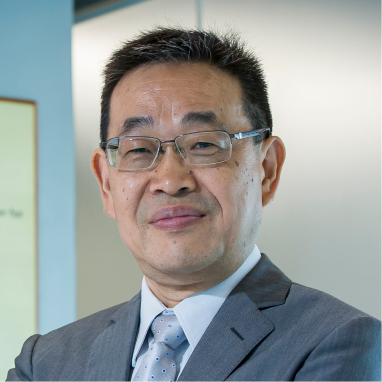THEME 2
A Paradigm-shifting, Fully-integrated, Compact Wastewater-to-resource Facility (WWRF)
T21-604/19-R
Project Coordinator
Professor Guanghao CHEN
The Hong Kong University of Science and Technology
Coordinating Institution
- The Hong Kong University of Science and Technology
Participating Institution(s)
- The Hong Kong Polytechnic University
- The Chinese University of Hong Kong
- City University of Hong Kong
- The University of Hong Kong
- Delft University of Technology
- University of Cape Town
- Ghent University
Abstract
Water scarcity is threatening the sustainable growth of cities worldwide, including Hong Kong, which imports approximately 70% of its freshwater from mainland China. The city has also adopted a dual-pipe system that supplies potable water for commercial and domestic purposes, while providing seawater for toilet flushing, saving 22% of its freshwater resources. Although effective in combating water scarcity, this dual-pipe system is expensive to maintain, and water importation costs are rising annually by 6%. A conventional solution to urban water scarcity is to reuse wastewater. However, three major issues persist. First, current reuse practices often involve costly and space-/energy-intensive post-treatments. Second, many wastewater technologies in use today are inefficient in terms of space utilization, energy consumption, and resource recovery. Third, most of these technologies produce substantial amounts of solid waste and brine wastewater, which are difficult to treat. To address these challenges, leading experts in water science and technology have collaborated with top researchers and engineers to develop a revolutionary wastewater treatment and reuse system known as the WasteWater-to-Resource Facility (WWRF). The fully-integrated, compact facility leverages novel membrane, chemical, and biological technologies to efficiently produce potable water and valuable biochemicals from saline wastewater, minimizing waste disposal.
Research Impact
This project team has developed a paradigm-shifting wastewater system for treating and reusing saline wastewater. A pilot-scale plant has been built at a local sewage treatment facility to test, optimize, and showcase the novel technologies and system. The trial is scheduled for completion by 2025. Embracing a comprehensive approach to water management, the new system integrates fresh, grey, saline, and brine water resources under the principle of “water is water, resource is resource.” In the short term, the project outcomes could facilitate the retrofitting of existing water treatment plants or the implementation of new systems, providing an alternative source of potable water and fostering sustainable urban development. In the medium term, the project aims to mitigate freshwater scarcity challenges in island and coastal areas, as well as supporting the development of floating cities to adapt to rising sea levels caused by global warming. Our research team has published over 170 peer-reviewed papers in reputable journals, including 59 papers in Nature Index journals. Our textbook, “Biological Wastewater Treatment, 2nd edition,” with Professor Guanghao CHEN serving as the lead editor, was awarded the Best Scientific Book prize from the International Water Association (IWA), the world’s largest water professional network. Two technologies developed in this project, the “Economic Energy-Efficient Membrane Bioreactor” (3E-MBR) and the “Low Energy Electrical Odor control of sludge” (LEEO®) technology, received the Silver Medal at the 48th International Exhibition of Inventions Geneva. The pilot study for LEEO® at Siu Ho Wan Sewage Treatment Works was honored as the Champion for the Mechanical Innovation and Implementation Award by the Institution of Mechanical Engineers (HK Branch). LEEO® also received the first round of RAISe+ funding from the HKSAR Government. Furthermore, this project has nurtured over 80 postgraduates, postdocs, and research personnel.

The Hong Kong University of Science and Technology
Professor Guanghao CHEN is a Chair Professor in the Department of Civil and Environmental Engineering and the Division of Environment and Sustainability at the HKUST. He is the founding director of the Hong Kong Branch of the Chinese National Engineering Research Center for Control and Treatment of Heavy Metal Pollution. He serves as the Director of Water Technology Center and Associate Director of the Institute for the Environment at HKUST. Professor CHEN is a mentor at the Global Sanitation Graduate School and a member of the Strategic Council of the International Water Association (IWA). He is also an editor of Water Research. Recognized as an IWA Distinguished Fellow in 2016, Professor CHEN has produced pioneering work including the well-known SANI® process for sludge-minimized biological wastewater treatment, and other new technologies such as SOSA®, LEEO®, and ECO® for sludge reduction, sludge odor control, and landfill leachate treatment. He has won more than 10 domestic and international awards and obtained over 20 invention patents in the Mainland and the United States.

